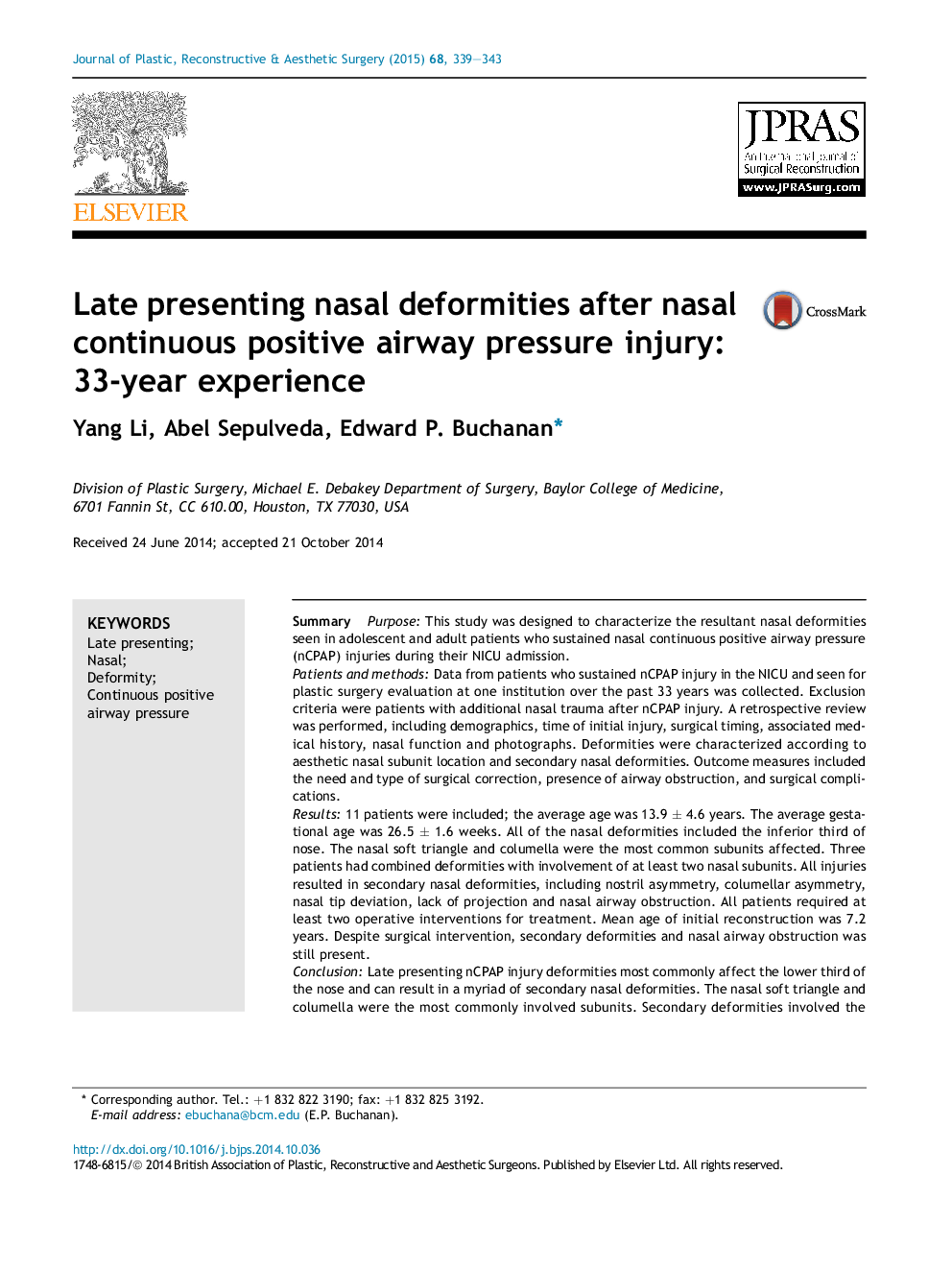| Article ID | Journal | Published Year | Pages | File Type |
|---|---|---|---|---|
| 4117276 | Journal of Plastic, Reconstructive & Aesthetic Surgery | 2015 | 5 Pages |
SummaryPurposeThis study was designed to characterize the resultant nasal deformities seen in adolescent and adult patients who sustained nasal continuous positive airway pressure (nCPAP) injuries during their NICU admission.Patients and methodsData from patients who sustained nCPAP injury in the NICU and seen for plastic surgery evaluation at one institution over the past 33 years was collected. Exclusion criteria were patients with additional nasal trauma after nCPAP injury. A retrospective review was performed, including demographics, time of initial injury, surgical timing, associated medical history, nasal function and photographs. Deformities were characterized according to aesthetic nasal subunit location and secondary nasal deformities. Outcome measures included the need and type of surgical correction, presence of airway obstruction, and surgical complications.Results11 patients were included; the average age was 13.9 ± 4.6 years. The average gestational age was 26.5 ± 1.6 weeks. All of the nasal deformities included the inferior third of nose. The nasal soft triangle and columella were the most common subunits affected. Three patients had combined deformities with involvement of at least two nasal subunits. All injuries resulted in secondary nasal deformities, including nostril asymmetry, columellar asymmetry, nasal tip deviation, lack of projection and nasal airway obstruction. All patients required at least two operative interventions for treatment. Mean age of initial reconstruction was 7.2 years. Despite surgical intervention, secondary deformities and nasal airway obstruction was still present.ConclusionLate presenting nCPAP injury deformities most commonly affect the lower third of the nose and can result in a myriad of secondary nasal deformities. The nasal soft triangle and columella were the most commonly involved subunits. Secondary deformities involved the nasal aesthetic subunits adjacent to the primarily affected areas, resulting in asymmetry as well as nasal airway obstruction. Most patients required staged open nasal reconstruction with composite grafts.
